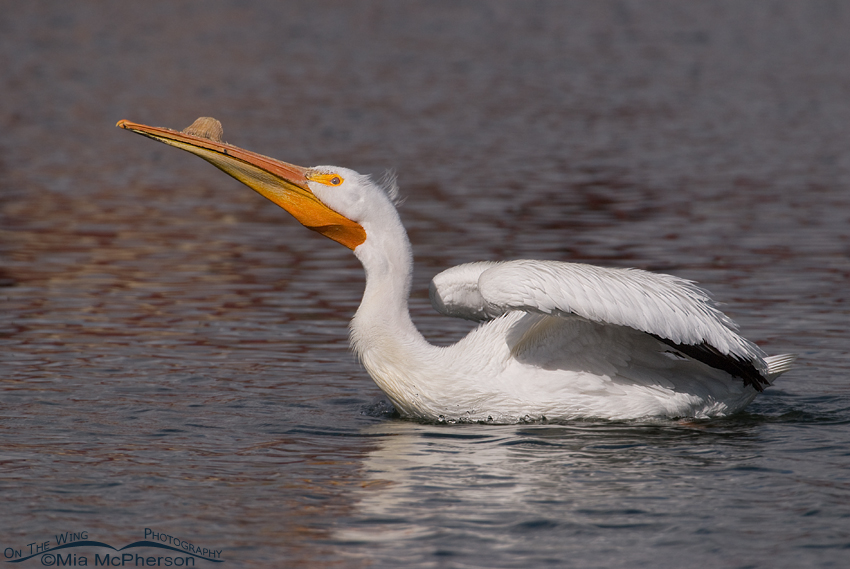 American White Pelican stretching – Nikon D200, tripod mounted, f7.1, 1/3200, ISO 250, -0.3 EV, 200-400mm VR with 1.4x TC at 400mm, full frame, natural light.
American White Pelican stretching – Nikon D200, tripod mounted, f7.1, 1/3200, ISO 250, -0.3 EV, 200-400mm VR with 1.4x TC at 400mm, full frame, natural light.
A while back I read something I found rather interesting when someone posted an image of an American White Pelican in breeding plumage on an online image critique gallery (Naturescapes.net) where the person who posted the pelican photo stated that the image would be perfect except for the growth on the bill.
The photographer seemed repulsed by the horn or caruncle (a fibrous, epidermal plate) on the bill and seemed to focus on it instead of the technical and aesthetic weaknesses in their image. And there were many of those.
The caruncle or horn is a growth on the bill of American White Pelicans that occurs yearly during the breeding season. It isn’t an ugly wart or malformation, it is a naturally occurring feature of the American White Pelican and as such I feel the horn adds to my image rather than being distracting. It is really no different than the change in color of the bill & lores of a Reddish Egret in breeding plumage and I have seen photographers scramble like fiddlers crabs over each other to get shots of Reddish Egrets in breeding plumage.
White pelicans can be challenging to expose properly and show detail in the plumage as most white birds can be but with the correct settings and the right light it can be done. The key for my image above was using -0.3 EV compensation to help control the exposure of the whites while still allowing detail to be seen in the feathers even in the shadow under the wing.
This image of an American White Pelican stretching was photographed at a pond a few blocks away from my home in 2010. The pelicans and other birds that frequent the pond have gotten used to the fishermen, walkers and other people so they are often less skittish and will come in close enough to get images where the subject nearly fills the frame. I do wish I had taken the time to zoom back a little, this is a smidge tighter than I would normally like.
As for the photographer who thought the horn made their image less than perfect? Different strokes for different folks I guess.
Life is good.
Mia
Click here to see more of my American White Pelican photos plus facts and information about this species.


Mia, I remember the first time I noticed that horn. I saw some White Pelicans with it at the Bear River Migratory Bird Refuge. I was bewildered by it and tried to figure it out. I think I came to that conclusion before I even went home and looked it up in a book (this was long before smart phones and internet everywhere)! Obviously the person who commented doesn’t know or understand nature. This is a fascinating photograph of a wild creature in its natural habitat and perfectly photographed as always!
A wonderful image with great detail Mia. Thanks for sharing your trick. The caruncle goes away September to February for the people who don’t want to see it. Yes, beauty is in the eye of the beholder, since the caruncle is definitely for breeding — maybe a way to size up good genes by the mate.
Great Detail and Light. I learned something new today, about the horn. I love the detail from the tip of the bill to the tip of the tail. excellent.
Graceful pose, almost as if it were balancing the caruncle, featuring it! My guess would be since it’s appearance and disappearance are related to breeding season, that the caruncle has to do with hormones and maybe display. I wonder if it affects their vision or ability to feed?
Mia,
The correct name for the horn is a caruncle ( no B), a ornamental integumentary structure. It seems to be confined to the American White Pelican and is shed in the non breeding season. Its function is unknown. Glen
Thanks Glen, I made the correction.